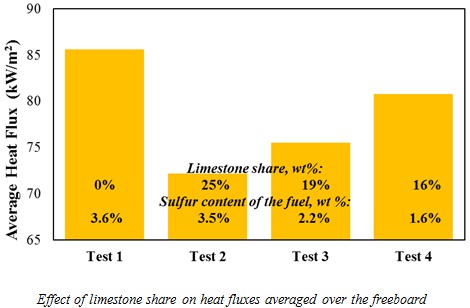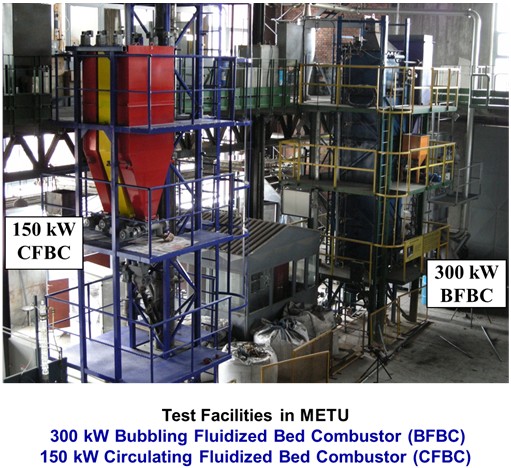Effect of Limestone Addition on Radiative Heat Transfer in FBCs
- English
- Türkçe
Even though much effort has been placed in understanding the radiative heat transfer in fluidized bed combustors (FBC), effect of limestone addition on radiative heat transfer has received little attention despite its role in the FBC applications. FBCs are widely used for combusting low-quality fuels like lignite, which is not only the world's most abundant fossil fuel but also one of the indigenous sources of energy in Turkey with an estimated quantity of 15.6 billion tons of reserves. A major proportion of this quantity is characterized by its high sulphur content, which makes in-situ desulfurization hence the presence of limestone particles in the combustor an inevitable part of the application.
Ates et al. (2018) investigated the effect of limestone addition on radiative heat transfer for indigenous lignite and lignite-olive residue blends under bubbling fluidized bed conditions. Investigation is performed through mathematical modelling by using the experimental data on four combustion tests previously performed in 300 kWt Atmospheric Bubbling Fluidized Bed Combustor (ABFBC) test rig in Middle East Technical University [1].
Outcomes of this study indicate that addition of limestone decreases the wall heat fluxes along the freeboard by increasing the optical thickness of the medium and decreasing the temperature of the particle-laden flue gas. Furthermore, investigation of radiative heat exchange for coal-biomass blends reveals that it is possible to increase wall heat fluxes in a FBC with in-situ desulfurization as well as to decrease SO2 emissions when sulphur content of the fuel blend is decreased by co-firing with biomass containing virtually no sulphur.

C. Ates, N. Selçuk and G. Kulah (2018), Effect of limestone addition on radiative heat transfer during co-firing of high-sulfur content lignite with biomass in fluidized bed combustors, Combustion Science and Technology, DOI: 10.1080/00102202.2018.1452122.
[1] Z. Gogebakan, Y. Gogebakan, and N. Selçuk (2008) Co-Firing of olive residue with lignite in bubbling FBC, Combustion Science and Technology 180(5), 854 (https://doi.org/10.1080/00102200801894117).

